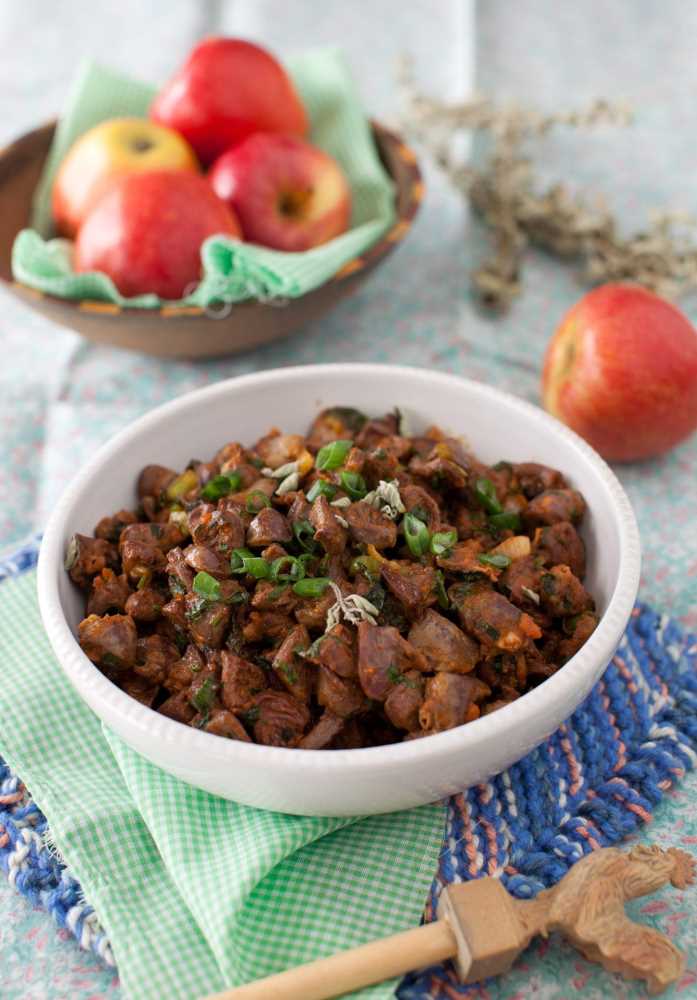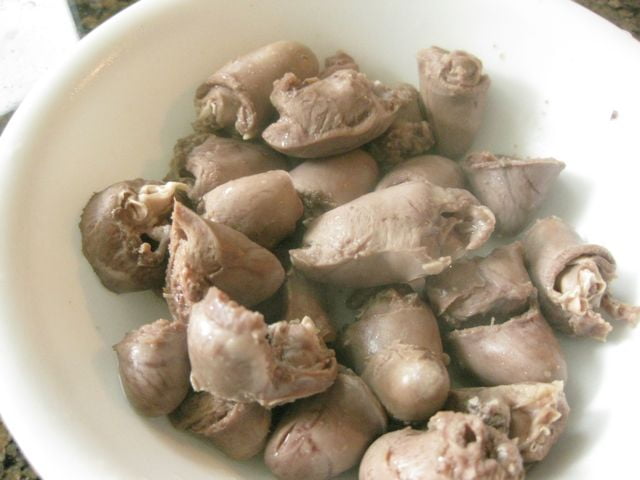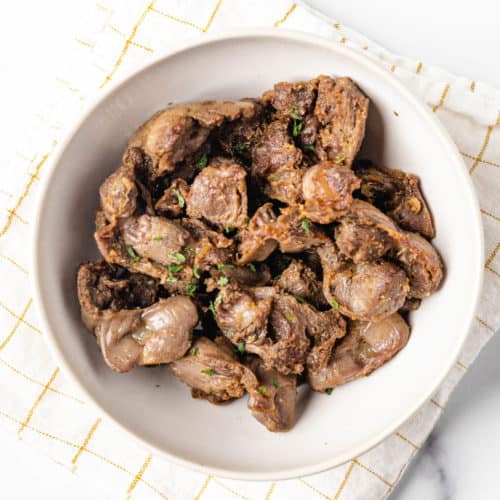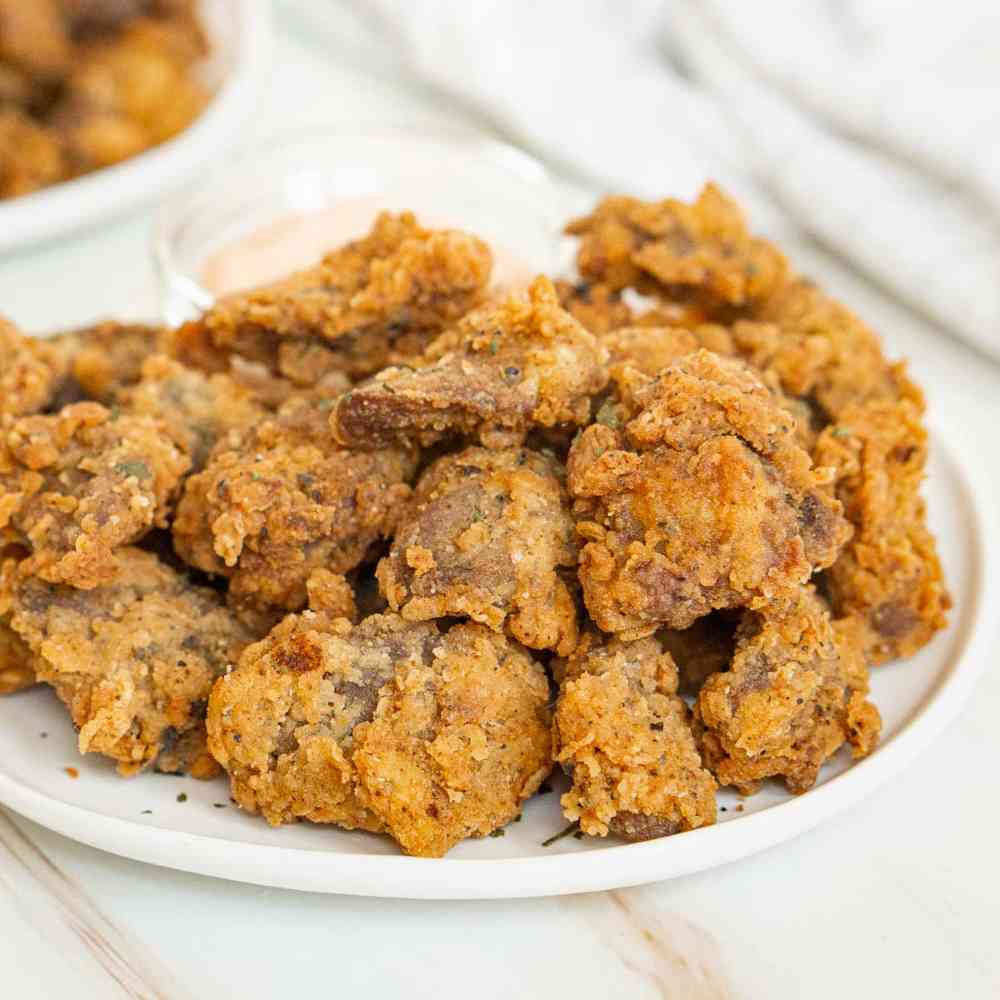How to Cook Chicken Heart For Cats

As a cat owner, providing a nutritious and well-balanced diet is crucial for your pet’s overall health and well-being. While commercial cat food is readily available, many pet owners are exploring homemade options to ensure their pets get the best nutrition possible such as to cook chicken heart for cats.
Chicken hearts offer numerous nutritional benefits for cats, including high-quality protein, essential amino acids, and vital vitamins and minerals. However, it is essential to cook chicken hearts properly and follow safety guidelines to ensure your cat’s health. In this article, we will explore the step-by-step process of cooking chicken hearts for your feline companion.
Can Cats Eat Chicken Heart?
Before we start, many of you might be wondering, can cats eat chicken hearts?
The answer is Yes!
Chicken hearts are safe and nutritious for cats when prepared and cooked properly. As obligate carnivores, cats require a diet rich in animal protein, and chicken hearts provide an excellent source of this essential nutrient. Their small size and tender texture make them easy for cats to consume and digest.
However, while chicken hearts can be a healthy addition to your cat’s diet, it’s essential to remember that they should not be the sole source of nutrition.
A balanced diet for cats should include a variety of protein sources, essential fatty acids, vitamins, and minerals. Commercial cat food products are formulated to meet these specific nutritional needs, but incorporating homemade treats like cooked chicken hearts can add variety and excitement to your cat’s meals.
Always remember to cook the chicken hearts thoroughly, avoid seasoning or additives that may be harmful, and introduce new foods gradually. Monitoring your cat’s response to the new treat and consulting with your veterinarian are essential steps to ensure your feline friend’s safety and well-being.
The Nutritional Value of Chicken Hearts for Cats

Before diving into the cooking process, let’s understand the nutritional value of chicken hearts for cats. These tiny organ meats are packed with nutrients that are beneficial for feline health. Chicken hearts are an excellent source of protein, containing essential amino acids that cats need for muscle development, tissue repair, and overall growth. They are also rich in taurine, an essential amino acid that is vital for maintaining healthy eyesight, cardiac function, and reproductive health in cats.
This makes them the ideal snack for your cats specially if you are looking to add variety to their existing diet. Taking a break from commercially prepared cat food is always a good idea and is rewarded by your cat being healthy, happy and having an extended life period.
Selecting and Handling Chicken Hearts
Selecting and handling chicken hearts properly is crucial to ensure your cat’s safety and health. Here’s a step-by-step guide to help you through the process.
- Choosing Fresh and High-Quality Chicken Hearts: When shopping for chicken hearts, look for fresh and undamaged organ meats. Opt for hearts that have a firm texture, with no signs of sliminess, discoloration, or an unpleasant odor. Buying from reputable sources, such as trusted butchers or reputable pet food suppliers, ensures the quality and freshness of the product.
- Maintaining Food Safety: Just like with any raw meat, handling chicken hearts requires strict food safety practices. Before you start handling the raw meat, thoroughly wash your hands with soap and water to remove any potential bacteria. This step is crucial in preventing the spread of harmful microorganisms that can cause foodborne illnesses.
- Use Separate Cutting Boards and Utensils: To avoid cross-contamination, use separate cutting boards, knives, and utensils for raw meat, including chicken hearts, and other foods that are not going to be cooked. Keeping raw meat away from ready-to-eat foods like fruits and vegetables reduces the risk of contamination and foodborne illnesses.
- Proper Storage Techniques: If you have leftovers or are storing chicken hearts for future use, it’s important to refrigerate or freeze them promptly. Refrigerate raw chicken hearts at or below 40°F (4°C) and use them within one to two days. For longer storage, place them in an airtight container and store them in the freezer. Proper storage prevents bacterial growth and helps maintain the quality of the organ meat.
By following these essential steps for selecting and handling chicken hearts, you can ensure that your cat receives a safe and healthy treat. Implementing proper food safety practices not only protects your feline friend from potential health risks but also offers peace of mind to you as a responsible pet owner. Always prioritize your cat’s well-being and consult with your veterinarian if you have any specific concerns about their diet or health.
How to Cook Chicken Heart For Cats?
Cooking chicken hearts is a simple process, and there are various methods you can use. Boiling, baking, or frying are popular options. Regardless of the cooking method, it is essential to avoid adding any seasoning or spices that may be harmful to cats, such as onion or garlic.
Below is a step-by-step guide on the methods you can use to cook chicken heart for cats, based on your personal preference and convenience:
1. Boiling Chicken Hearts:

Boiling chicken hearts is a straightforward method that retains the natural flavors and tenderness of the organ meat. Follow these steps to prepare a delicious treat for your cat:
Step 1: Rinse the chicken hearts thoroughly under cold running water to remove any debris or excess blood.
Step 2: Place the hearts in a pot and add enough water to cover them fully.
Step 3: Bring the water to a boil over medium-high heat.
Step 4: Once boiling, reduce the heat to low and let the hearts simmer for about 15-20 minutes.
Step 5: Check the hearts for doneness; they should be fully cooked with no pink or raw parts inside.
Step 6: Allow the hearts to cool before serving them to your cat. You can serve them whole or chop them into smaller, cat-friendly pieces.
2. Baking Chicken Hearts:

Baking chicken hearts is a healthy and hassle-free cooking method that results in tender and slightly crispy treats. Follow these simple steps:
Step 1: Preheat your oven to an appropriate temperature, usually around 375°F/190°C.
Step 2: Rinse the chicken hearts under cold water to ensure they are clean.
Step 3: Place the hearts on a baking sheet lined with parchment paper or lightly greased with cat-safe oil.
Step 4: Bake the hearts for approximately 15-20 minutes, or until they are fully cooked and slightly browned on the edges.
Step 5: Allow the hearts to cool before offering them to your cat. You can serve them whole or chop them into smaller pieces.
3. Frying Chicken Hearts:

Frying chicken hearts adds a delightful crispy texture to the treats, making them even more appealing to your feline companion. Here’s how to do it safely:
Step 1: Rinse the chicken hearts thoroughly to remove any debris or impurities.
Step 2: Lightly coat the hearts with cat-safe oil, such as coconut oil or olive oil. This will help prevent sticking and add some healthy fats to the treat.
Step 3: Heat a non-stick pan over medium heat and add the coated chicken hearts.
Step 4: Cook the hearts for approximately 2-3 minutes on each side or until they are fully cooked and golden brown.
Step 5: Let the hearts cool before serving them to your cat. Be sure to cut them into smaller pieces for easy consumption.
Remember, the key to cooking chicken hearts for your cat is simplicity and safety. Stick to these easy methods and avoid seasoning or ingredients that may harm your furry friend. Always allow the cooked hearts to cool before offering them to your cat, and remember to incorporate these treats into their diet gradually to monitor their response. With these delicious and safe cooking methods, you can provide your beloved feline with a delightful and nutritious treat that they’ll surely adore.
Introducing Chicken Hearts into Your Cat’s Diet
Introducing chicken hearts into your cat’s diet requires a gradual approach to ensure their acceptance and well-being. Start by mixing small amounts of cooked chicken hearts with your cat’s regular food. Observe their response and watch for any signs of allergies or digestive issues.
If your cat takes well to the new treat, gradually increase the portion size over time. However, if you notice any adverse reactions, such as vomiting or diarrhea, discontinue feeding the chicken hearts and consult your veterinarian for guidance.
Always prioritize your cat’s health and comfort when introducing any new food into their diet.
Complementary Ingredients for a Balanced Diet
To ensure a well-rounded and balanced diet for your feline companion, chicken hearts should be supplemented with other essential nutrients from vegetables and grains. While cats are obligate carnivores and primarily thrive on animal-based protein, incorporating small amounts of cat-safe vegetables and grains can provide additional vitamins, minerals, and fiber to support their overall health.
Consulting with your veterinarian is crucial to determine the appropriate complementary ingredients for your cat’s individual needs. Not all vegetables and grains are suitable for cats, as some may be toxic or difficult to digest. Carrots, peas, and cooked pumpkin are examples of cat-friendly vegetables that can be added in moderation. Additionally, whole grains such as brown rice or oats can be included in small portions to provide extra fiber and carbohydrates.
However, it’s important to note that vegetables and grains should only comprise a small portion of your cat’s diet. The primary focus should remain on high-quality animal protein, such as chicken hearts, to meet their carnivorous nutritional requirements. By striking the right balance and seeking professional advice, you can create a well-rounded and nutritious diet that promotes your cat’s health and happiness.
Potential Risks and Precautions
- Choking Hazards: Chicken hearts, though small, can still pose a choking risk for cats, especially if they are fed whole. To minimize this risk, cut the hearts into bite-sized pieces before serving them to your feline friend.
- Bone Safety: While chicken hearts are relatively bone-free, there may be small cartilage pieces attached. It’s essential to inspect the hearts carefully before cooking and remove any bones or cartilage that could present a choking hazard or cause harm to your cat’s digestive tract.
- Portion Control: Moderation is key when introducing new treats to your cat’s diet. Overfeeding chicken hearts or any new food item may upset your cat’s stomach or lead to digestive issues. Start with small portions and monitor your cat’s response before increasing the quantity.
- Allergies and Sensitivities: As with any new food, some cats may be allergic or sensitive to chicken hearts. Watch for any signs of allergic reactions, such as itching, vomiting, or diarrhea. If your cat exhibits any adverse reactions, discontinue the treat and consult your veterinarian.
- Consult Your Veterinarian: Before adding chicken hearts or any new food to your cat’s diet, consult with your veterinarian. They can provide personalized dietary advice based on your cat’s specific health needs and ensure that the addition of chicken hearts aligns with their overall dietary plan.
By taking these precautions and being mindful of potential risks, you can safely incorporate chicken hearts into your cat’s diet and provide them with a delightful and nutritious treat that they’ll enjoy.
Conclusion
Cooking chicken hearts for your beloved feline companion can be a rewarding and nutritious experience. By selecting fresh, high-quality organ meats and following proper cooking and handling techniques, you can ensure your cat enjoys a delicious and safe treat.
However, remember that chicken hearts should only complement a balanced diet, and it is crucial to consult your veterinarian for personalized dietary advice. With care and attention, you can provide your cat with a diverse and nutritious diet that supports their health and happiness for years to come.


